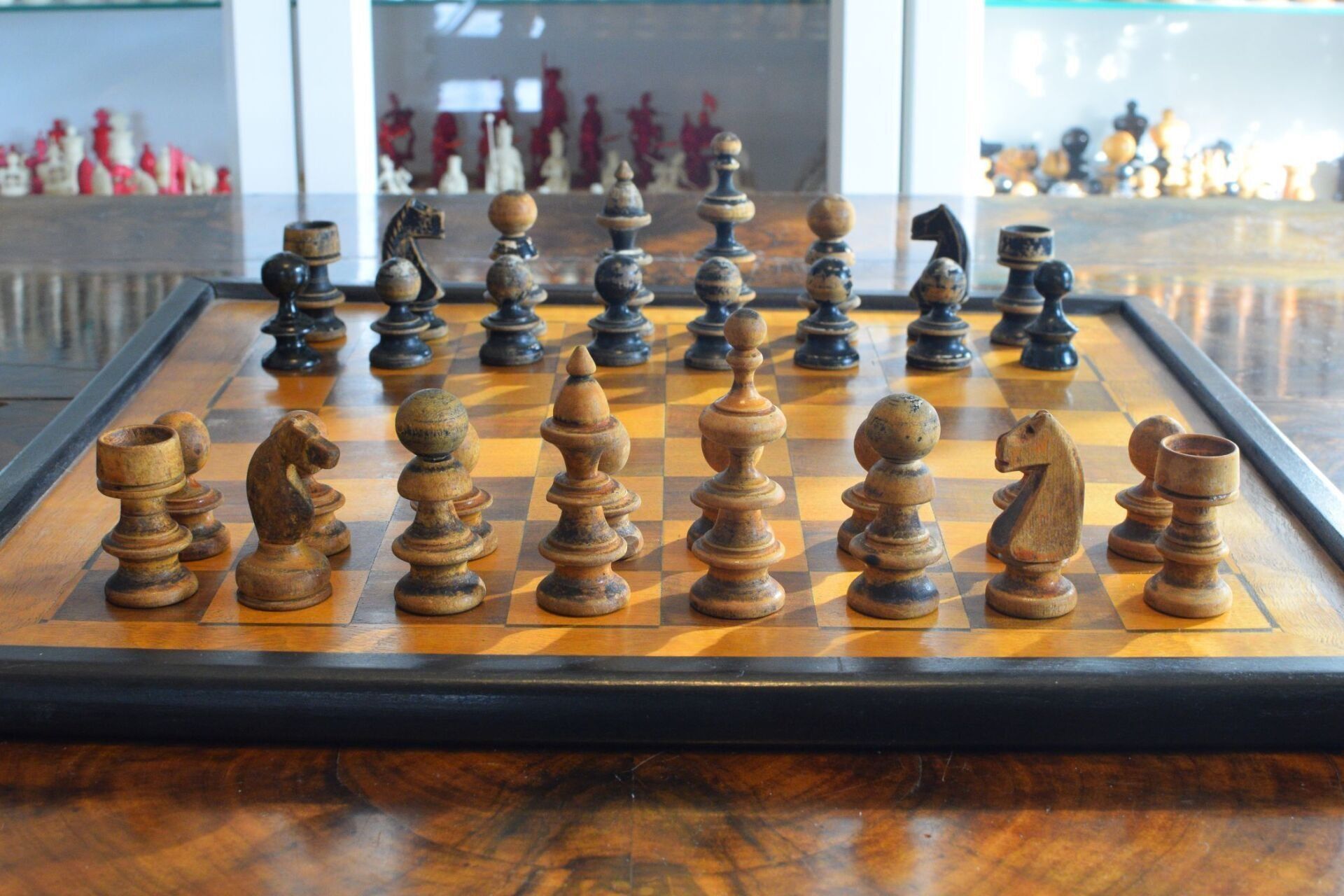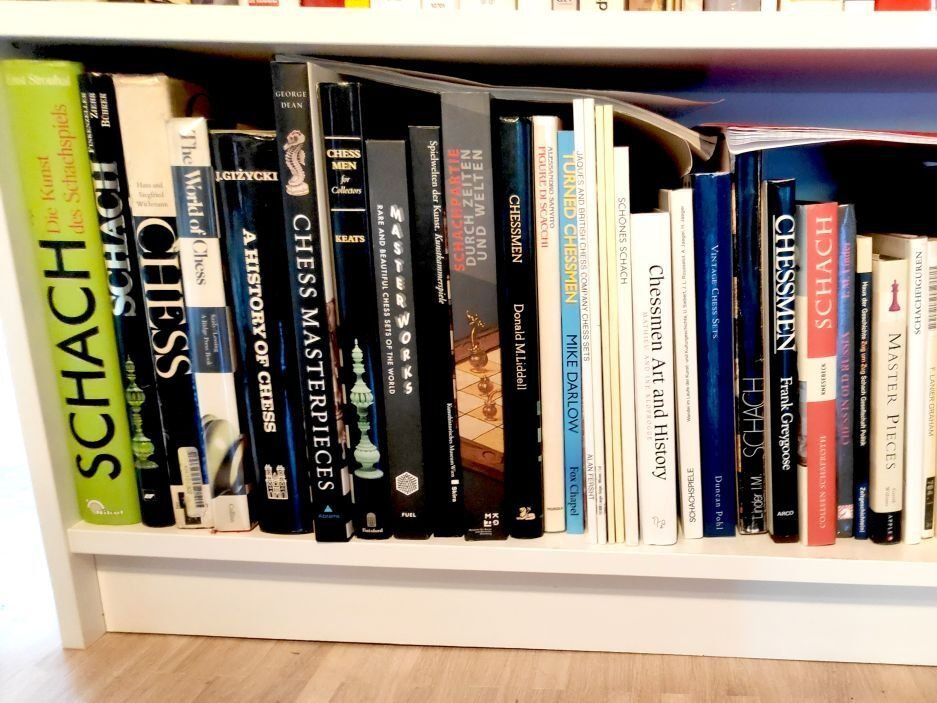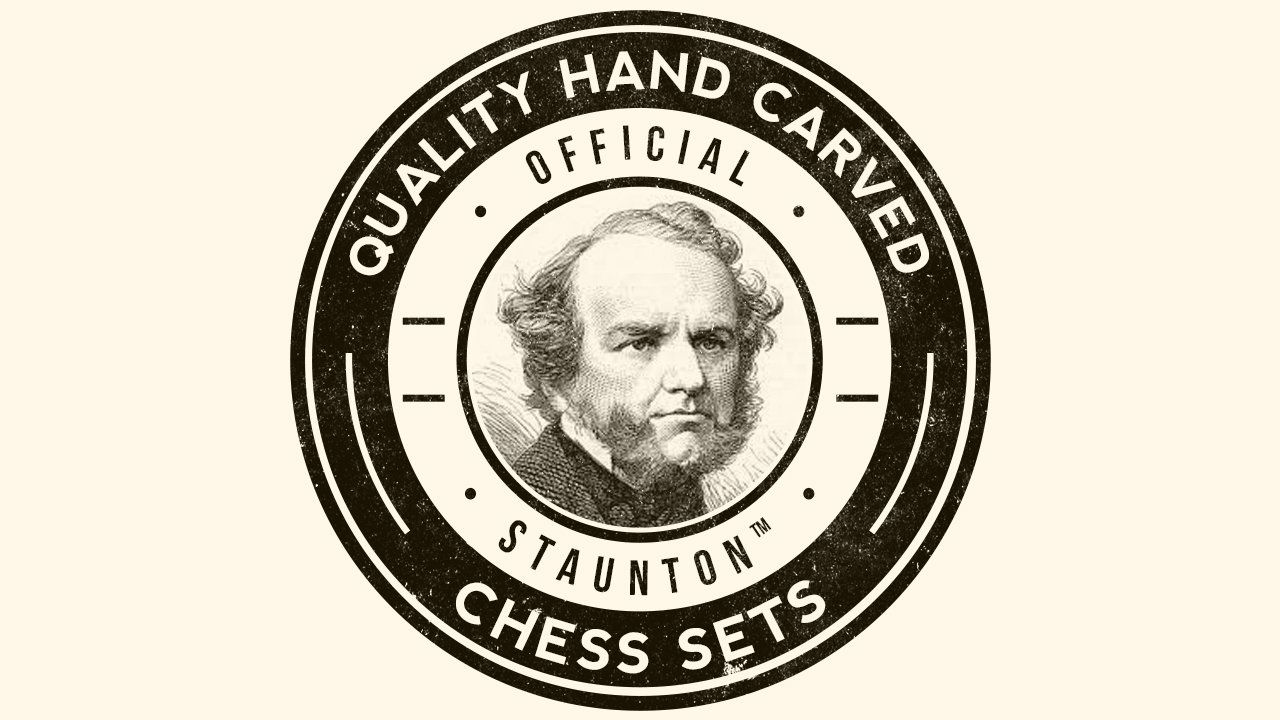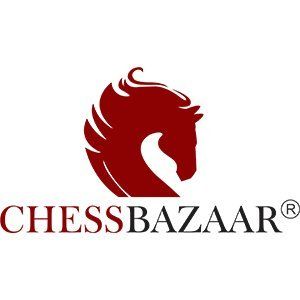Russian Porcelain Chess Set (Gardner), ca. 1950-2000
A Russian porcelain set from the second half of the 20th century, made by the Gardner factory in Verbilki near Moscow, which already exists since 1766, together with a divided porcelain board bearing the "Gardner" mark underneath. The chessmen as soldiers, painted black and natural, with a king size of 8.5 cm. Both sides with under the glaze red and gold decoration.
The king with a greyhound, the queen with two cats at her feet. The bishop as an officer with lap dog and cannon, the knight as a horse with goat, and the pawn as a soldier with sentry box and goose.
The rook is displayed as a ship, which is particularly interesting, as this is something very often seen in Russian sets, e.g. the ivory sets from Kholmogory, an example of which I have shown below. It is derived from the very early shapes of rooks typical for the ancient periods and the middle ages, where rooks were usually carved "with a body of rectangular outline, with wide surfaces generally taller than broad, but frequently also square and with the top cut away diagonally downwards to form pinnacles", as Hans Wichmann puts it. One theory describes this form as the silhoulette of a chariot, another one describes it as the symbolised form of the giant bird ar-Ruchch, commonly known from the middle eastern mythology as "Roc" or "Ruk" (hence the term "Rook", according to this theory). However, the form of the ancient pieces could also be mistaken as the outline of a boat or small ship, which was the interpretation of many chess carvers in today's Russia. They carved the rook as a ship or boat, and until today the Russian name of the rook is "ладья" (lad'ja), which also means barge or boat.















